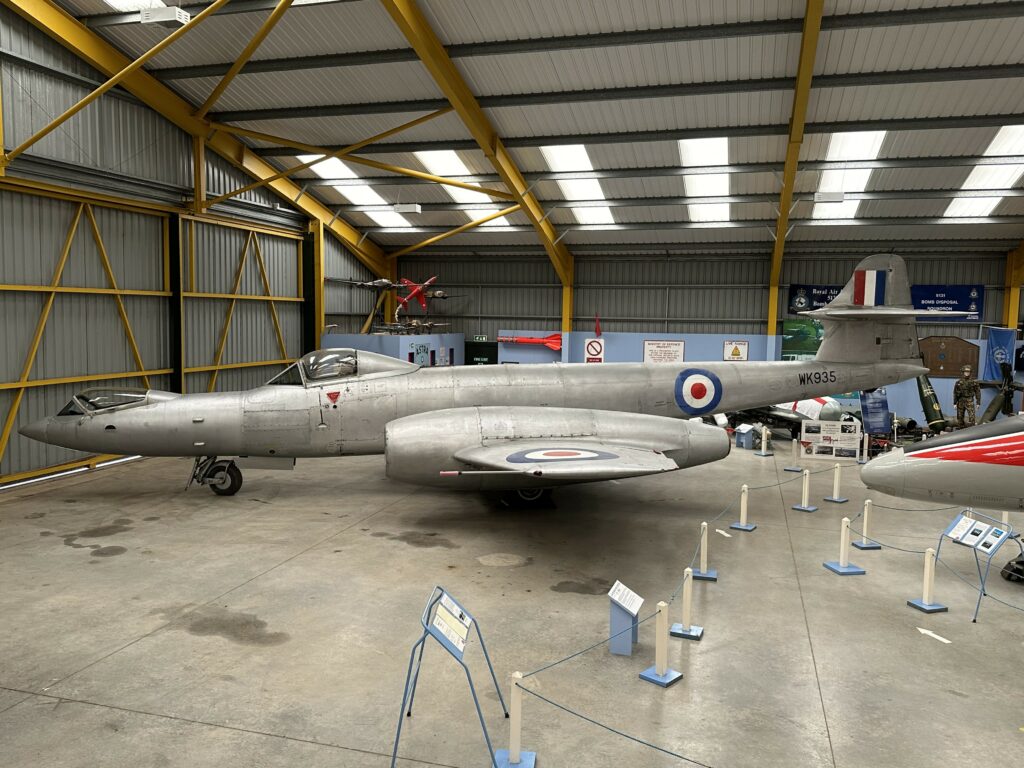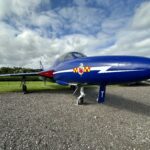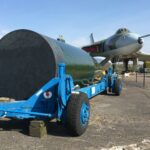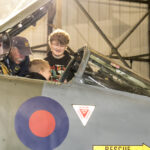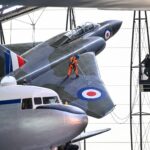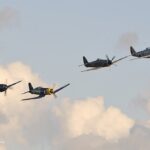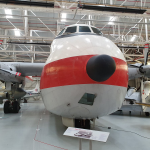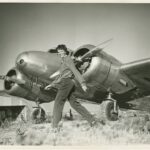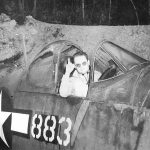PRESS RELEASE
Throughout 2023 and 2024 the trustees of the Newark Air Museum (NAM) have been in discussions with the Royal Air Force Museum (RAFM), regarding the loan of the Gloster Meteor F.8 (mod) WK935, which is often referred to as the Prone Meteor. The Loan Agreement was finalised on 21st June, 2024. Thanks to a lot of pre-planning and preparation work the Prone Meteor was moved from the RAFM Cosford site to NAM’s site in eastern Nottinghamshire on Monday June 24th, 2024.
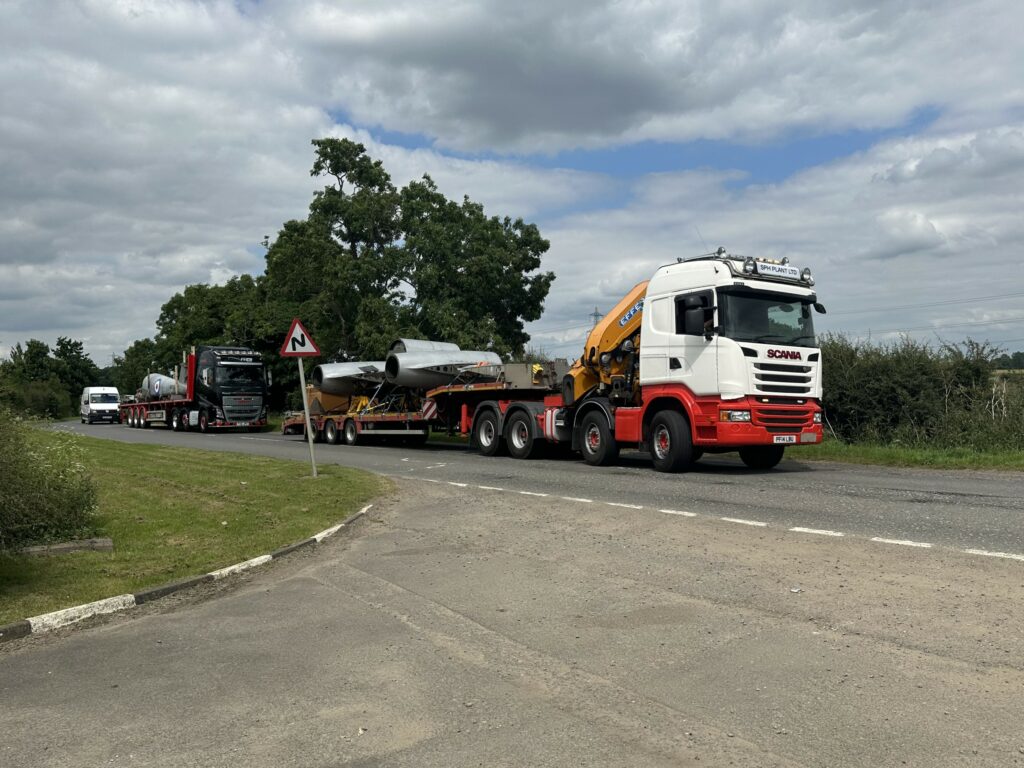
Staff from the Michael Beetham Conservation Centre (MBCC) at Cosford supervised the move, which was undertaken by their preferred contractor SPH Plant Limited from Telford, Salop. During a subsequent two-day time period the MBCC staff reassembled the Prone Meteor, before moving into Hangar 2 on NAM’s Southfield Site. Local forklift hire was kindly arranged by AEM Lifting from Tuxford, Notts.
“The museum first contemplated trying to take the Prone Meteor on loan, at the suggestion of aviation historian Ken Ellis, whilst developing the Interpretation Plan for the other British prone trials aircraft, the Reid and Sigrist Desford,” Newark Air Museum trustee Colin Savill said.
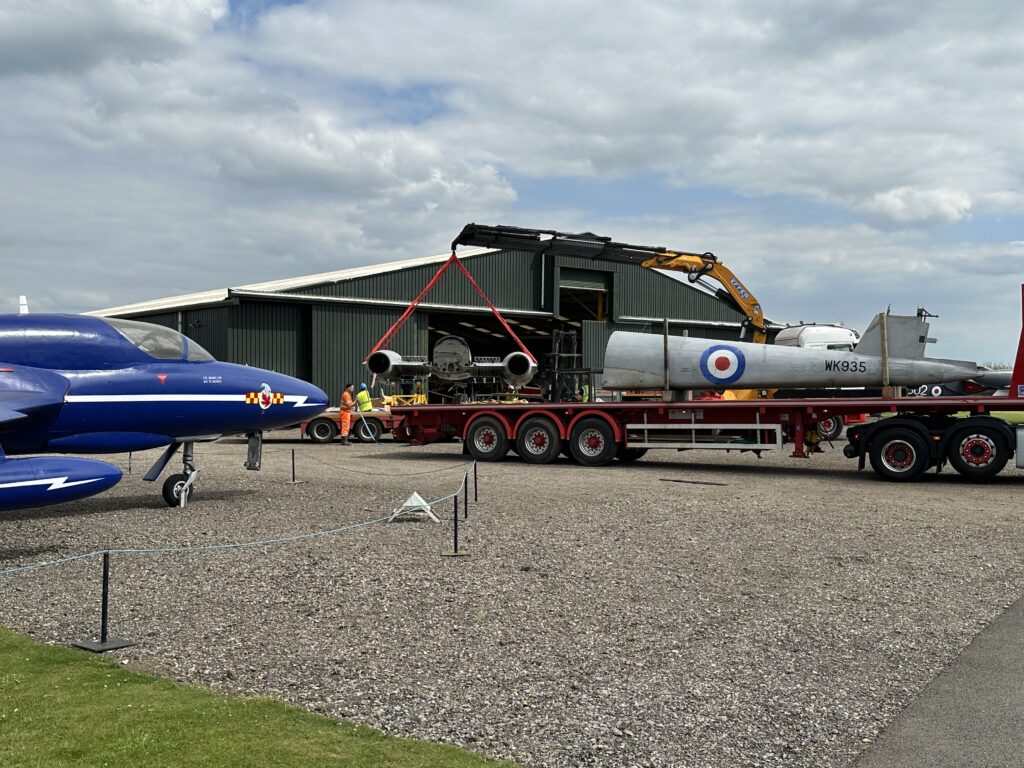
“We are grateful to the Royal Air Force Museum staff at both London and Midlands, who have helped implement this loan agreement.” He concluded, “Securing the loan of the Prone Meteor allows us to display these two unique aircraft from the golden age of British aviation, together at one location; something that has never happened before!
An additional comment has also been made by Dr Harry Raffal RAF Museum historian, who said “We are delighted that through our loan of the Meteor F8 to Newark Air Museum new audiences will engage with this unique strand of the RAF story. The loan will provide an exciting new exhibit at Newark Air Museum whilst helping the RAF Museum share our collection more widely.”